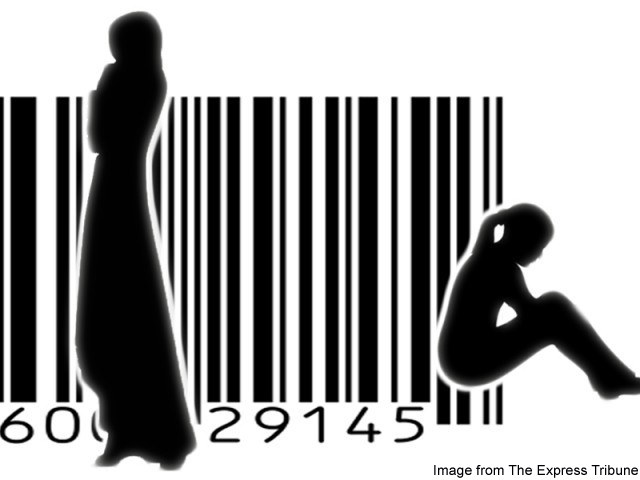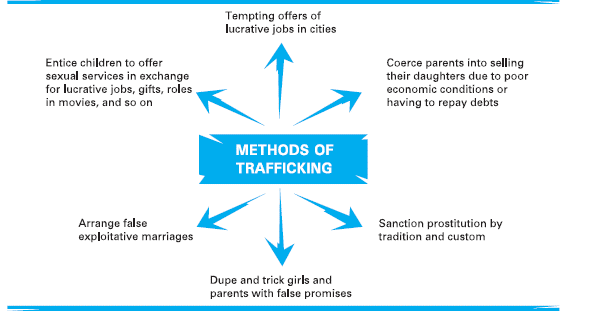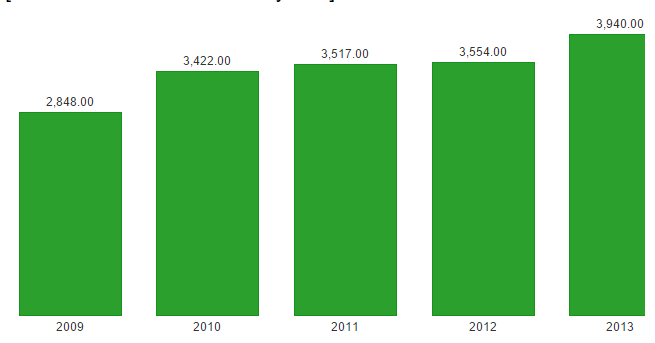Female Trafficking: Where am I?

Arushi Mehta is a student of B.Sc Life Science. Apart from biology she has a strong inclination towards writing. She write fictions, poems and much more. She wants her voice to be heard and writing provides her that platform. She writes about inhuman acts as well and she scrutinizes the internet and newspapers to make her articles strong and justifiable.
Female Trafficking: Where am I?
I was playing outside, I was walking home, I was sitting on my doorstep, I was talking on the phone, I was begging by the road, I was coming back from a party, I was eating food by the roadside WHEN THEY PICKED ME.
Trafficking is not just another issue faced by women. It is a parasite, it is a devil who is becoming increasingly powerful with each rising day. From girls to women, from developed countries to under-developed villages, female trafficking cases are worsening. Women and girls are trafficked within the country for the purposes of commercial sexual exploitation and forced marriage, especially in those areas where the sex ratio is highly skewed in favour of men. India is also a destination for women and girls from Nepal and Bangladesh trafficked for the purpose of commercial sexual exploitation. Sexual exploitation of women and children for commercial purposes takes place in various forms including brothel-based prostitution, sex-tourism, and pornography. Female trafficking in India results in women suffering from both mental and physical issues. Mental issues include disorders such as PTSD, depression and anxiety. The lack of control women have in trafficking increases their risk of suffering from mental disorders. Women who are forced into trafficking are at a higher risk for HIV, TB, and other STDs. Condoms are rarely used and therefore there is a higher risk for victims to suffer from an STD.
The female trafficking statistics are as follows:
A few weeks ago, the CBI unearthed information about a human trafficking racket, and estimated that around 8000 women were transported to Dubai using Delhi as a transit point. More recently, there were reports about a man who trafficked 5000 tribal kids from the remotest areas of Jharkhand. Such cases highlight the ever growing problem of human trafficking in India. As per data from National Crime Records Bureau (NCRB), the number of registered human trafficking cases has increased by 38.3% over five years from 2,848 in 2009 to 3,940 in 2013. The conviction rate for such cases has declined 45%, from 1,279 in 2009 to 702 in 2013.

Figure 2 Methods of trafficking.
How Government is helping to eradicate this evil.
- Trafficking in Human Beings or Persons is prohibited under the Constitution of India under Article 23 (1)
- The Immoral Traffic (Prevention) Act, 1956 (ITPA) is the premier legislation for prevention of trafficking for commercial sexual exploitation.
- Criminal Law (Amendment) Act 2013 has come into force wherein Section 370 of the Indian Penal Code has been substituted with Section 370 and 370A IPC which provide for comprehensive measures to counter the menace of human trafficking including trafficking of children for exploitation in any form including physical exploitation or any form of sexual exploitation, slavery, servitude, or the forced removal of organs.
- Protection of Children from Sexual offences (POCSO) Act, 2012, which has come into effect from 14th November, 2012 is a special law to protect children from sexual abuse and exploitation. It provides precise definitions for different forms of sexual abuse, including penetrative and non-penetrative sexual assault, sexual harassment.
- There are other specific legislations enacted relating to trafficking in women and children Prohibition of Child Marriage Act, 2006, Bonded Labour System (Abolition) Act, 1976, Child Labour (Prohibition and Regulation) Act, 1986, Transplantation of Human Organs Act, 1994, apart from specific Sections in the IPC, e.g. Sections 372 and 373 dealing with selling and buying of girls for the purpose of prostitution.
- State Governments have also enacted specific legislation to deal with the issue. (e.g. The Punjab Prevention of Human Smuggling Act, 2012.
What we can do to fight this evil?
- Learn the indicators of human trafficking so you can help identify a potential trafficking victim.
- Volunteer and support anti-trafficking efforts in your community.
- Be alert when travelling: Though most friendly strangers are authentic, never agree to go somewhere with anyone or allow yourself to be separated from your group. People, especially young people, travelling abroad can be naive, so arm them with safe travelling tips so they are not vulnerable to those who would exploit them.
- Man up: Our culture’s portrayal of manhood is far from biblical. “Pimp” has become a glamourized term, and the destructive effects of pornography have been downplayed. Men need to tell other men and the next generation of men that true masculinity protects women and children rather than exploits them.
- Speak up: Don’t minimize the power of Facebook posts, tweets, blogs, and other modes of electronic communication. Use your resources to speak up. Consider downloading videos to your laptop, phone, or iPad, so you’re even ready for an impromptu presentation.
- Sponsor a child: Poverty makes populations more vulnerable to traffickers’ lies. Consider helping a child in an area of the world where child sex-trafficking is most prevalent.
- Use your talents: Offer your unique gifts and skills to God and see what doors He opens for you to use them. Perhaps you’re a writer, artist, videographer, web designer, musician, or even a good cook. Your talents can be used to raise awareness or funds, provide a needed skill for a current or beginning ministry, or bring people together to learn about or address these issues.
Opinions expressed are of the bloggers.



